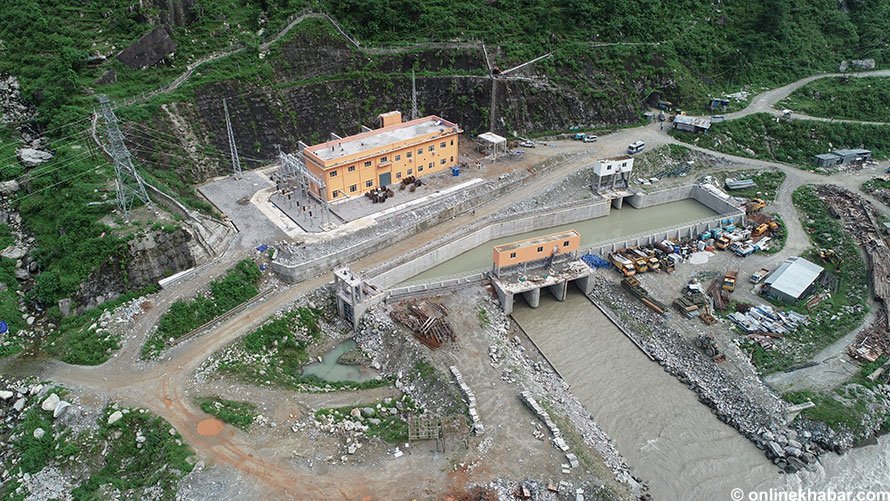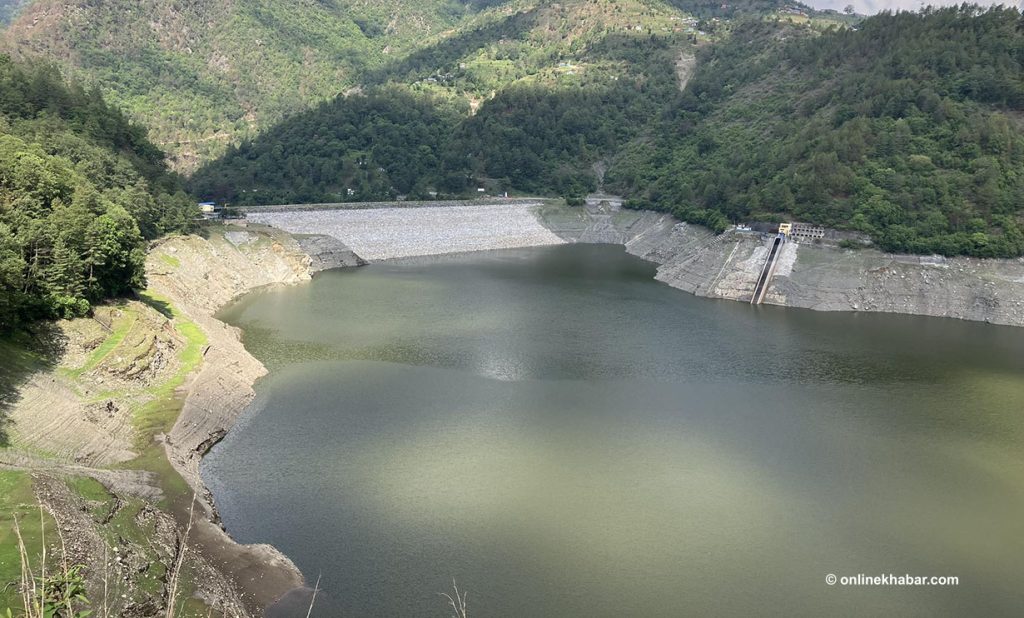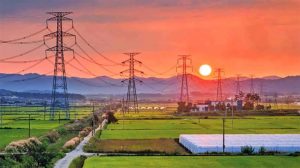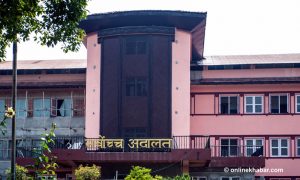For a long time, Nepal has been facing the problem of holding the hydropower projects, after receiving the survey and production licences for them. Not only domestic but some foreign companies are also procrastinating the licensed projects.
Most of these companies that hold the hydropower projects are from India and China. According to the Department of Electricity Development and Investment Board Nepal, the projects with over 6,000 megawatts are still waiting for investment. Some of the projects are directly held by foreign companies while a few others are taken hostage indirectly by foreign companies using various Nepali channels.
Project’s completion in dilemma

The deadline for raising investments for the Upper Karnali Hydropower Project has been extended for another two years. In 2014 the government signed its project development agreement with an Indian company GMR. According to the agreement, GMR was supposed to collect investments within six months, but now, it has already been eight years and nothing has been accomplished as per the agreement. Moreover, it is still uncertain whether it will be able to accomplish the goal in these extended two years.
Earlier, the China Gezhouba Group Company was supposed to complete the Budhigandaki hydropower project within five years. This project has a capacity to produce 1,200 megawatts of electricity. However, their delay made the government take over the project on June 29, cancelling its licence and assigning a domestic company run by the government to look over it.
Nevertheless, this Nepali company might not be reliable as it was unsuccessful to complete the projects on time. The projects that it withheld after receiving the survey licence are the Dandagaun-Khalang-Bheri hydropower project (128 megawatts), Bheri-1 (440 megawatts) and Bheri-2 (256 megawatts).
Meanwhile, the Investment Board Nepal has decided to give a contract for building the West Seti Hydropower Project of 450 megawatts to an Indian company. The board has decided to hold a discussion with the Indian company National Hydroelectric Power Corporation (NHPC) regarding the investment modality.
After the agreement with the Chinese company Three Gorges was withdrawn, the board on May 6, 2022, received a mandate to discuss investment modality with the Indian company.
Prime Minister Sher Bahadur Deuba has said that since Nepal cannot complete the West Seti Hydropower Project alone, the Indian company has been assigned to join it. There is no clarity on how the Indian company could complete the project left by the Australian Snowy Mountains Engineering Corporation (SMEC) and the Chinese Three Gorges.
The problem of power

On May 12, Nepal Electricity Authority and Indian Satluj Jal Vidyut Nigam sealed a deal to build the Arun-4 Hydropower Project (679 megawatts). Prime Minister Deuba, Indian Prime Minister Narendra Modi, Nepal Electricity Authority Managing Director Kul Man Ghising and Satluj Jal Vidyut Nigam Managing Director Nanda Lal Sharma signed the agreement.
On 2021, June 22, the Investment Board decided to give a contract for Lower Arun Hydropower Project (900 megawatts) to Satluj Jal Vidyut Nigam. On July 11, an agreement was signed in this regard.
India was eyeing this project since 2016. After dissolving the parliament, the then Prime Minister KP Sharma Oli abruptly handed the project to an Indian company with an agreement to invest Rs 153 billion.
Hydroelectricity Investment and Development Company Limited (HIDCL) in coordination with Power China had proposed an investment structure for Lower Arun. Without evaluating the proposal that had a plan to free 25 per cent of electricity, the project was handed to Satluj Jal Vidyut Nigam, which was working on Arun III Hydropower Project (900 megawatts).
The Tamor reservoir-based Hydropower Project (756 megawatts) and Madi Multipurpose Hydropower Project (153 megawatts) have been handed to the Chinese company, Power China.
During the visit of Chinese President Xi Jinping in 2019, the projects were handed to the Chinese company. But still, the construction work has not started.
In these projects, Hydroelectricity Investment and Development Company Limited will have an investment of 26 per cent and Power China will have an investment of 74 per cent. Nepal Electricity Authority was studying the Tamor project, which is now in the hands of Power China. But later, when the power centres started showing interest in it, the authority did not renew the licence and gave the project to China.
The Indian obstruction

Lately, India has adopted a policy of not buying electricity from the projects built with foreign investment and management, and it has hit Nepal’s hydropower sector hard. Even the projects that have already signed power purchase agreements with the authority have not been able to proceed with construction.
According to experts, India, treating electricity as a strategic commodity, is trying to discourage the increasing use of Chinese contracts, human resources and technology in Nepal’s hydropower projects.
The international electricity trade procedure issued by India on February 26, 2021, states that electricity of projects invested or controlled by individuals and companies of the countries that do not have a bilateral agreement on cooperation in the electricity sector with India will not be imported.
This provision has prevented the electricity generated by Nepali projects invested by China and Pakistan from going to India.
Currently, India is the only convenient market for the trade of electricity produced in Nepal. There is neither an electricity trade agreement nor an international transmission line with China. However, there is an electricity trade agreement with Bangladesh, but there is a complication as it has to pass through India. Due to this, the proposed Chinese investment is uncertain.
Ashish Shrestha, an undersecretary of the Department of Electricity Development says the department is mounting pressure to build the projects whose licence has already been issued, as soon as possible. However, he also says that projects are delayed due to the inability to raise financial investments on time.
This story was translated from the original Nepali version and edited for clarity and length.

























